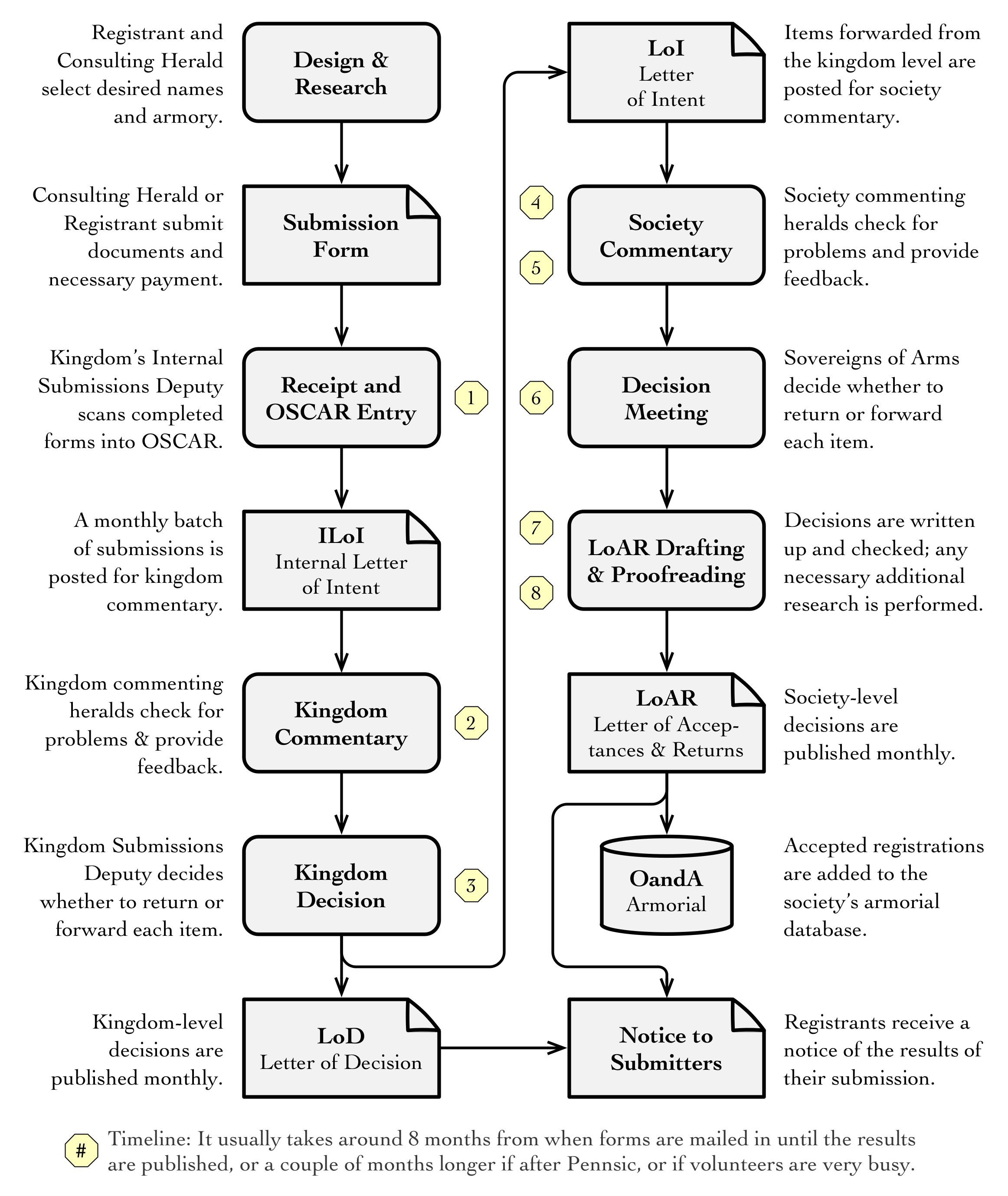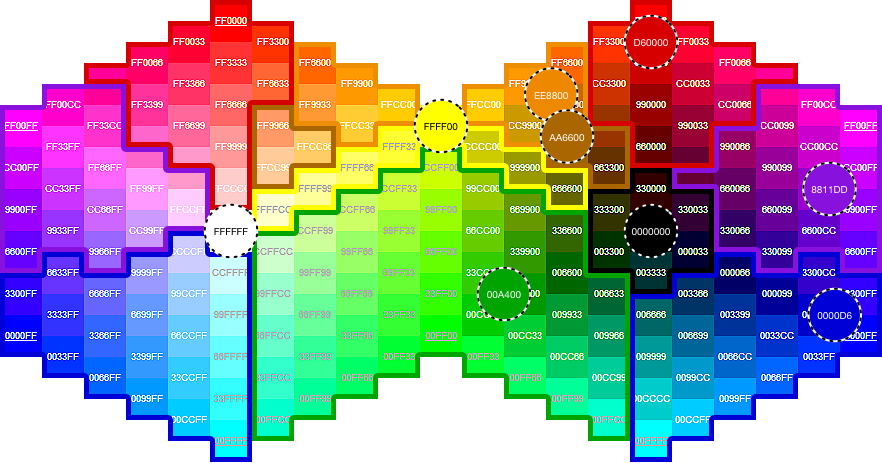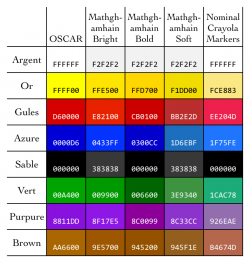People seeking to register a name or armory with the SCA’s College of Arms are often baffled by the length of time the process takes and the inscrutable jargon used to describe the various stages.
There have been numerous attempts to provide an overview of this process, to which I have now added my own contribution below.
Some of the terminology here reflects current usage in the East Kingdom; in other places the ILoI may be called an LoP, the LoD may be called an LoR or ILoAR, and the LoI may be called an ELoI or KLoI.
Likewise the timelines maybe slightly different in other kingdoms, as each kingdom’s commentary process is run on its own calendar. (And few kingdoms have the same backlog of submissions after Pennsic to cause slower processing in the fall months.)
This diagram is also available as a printable PDF.



